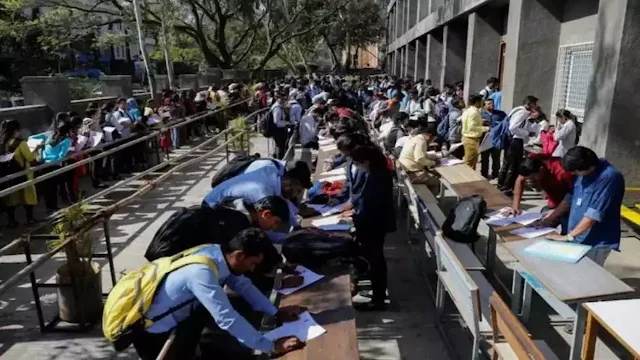Urban Oasis or Jobless Jungle? Unveiling the Highest and Lowest Unemployment Rates in US Cities
Finding employment can be a breeze in some cities, while a struggle in others. Understanding the urban areas with the highest and lowest unemployment rates can be crucial for job seekers, employers, and policymakers alike. Let's delve into the latest data and explore the factors behind these contrasting realities.
Top Performers: Where Jobs Abound:
As of December 2023, several metropolitan areas boasted low unemployment rates, indicating thriving job markets and economic opportunities:
- Maryland & North Dakota: At the top of the chart, Maryland and North Dakota shared the coveted position with a mere 1.9% unemployment rate in their respective urban areas.
- South Dakota & Vermont: Following closely behind are South Dakota and Vermont, both boasting a 2.0% unemployment rate in their urban centers.
- Lowlands League: Cities across the Midwest and Pacific Northwest dominate the top ten, with Nebraska, New Hampshire, Utah, Kansas, and Hawaii showcasing strong job markets and rates ranging from 2.3% to 2.9%.
Challenges Loom: Cities with High Unemployment:
While some cities celebrate low unemployment, others face challenges creating employment opportunities:
- California's Struggles: California holds three spots in the top ten for highest urban unemployment rates. Fresno, Merced, and Bakersfield suffer rates exceeding 9%, highlighting the economic disparities within the state.
- Rust Belt Blues: Cities in the former "Rust Belt" continue to grapple with unemployment. Youngstown, Ohio, and Elkhart-Goshen, Indiana, face rates above 6%, reflecting ongoing shifts in the manufacturing industry.
- Beyond Numbers: These figures paint a broad picture, but individual experiences within these cities can vary depending on factors like race, gender, and skill level.
Beyond the Rates: Unveiling the Story:
Low unemployment doesn't automatically translate to good jobs, while high rates don't always reveal the whole picture. Here are some factors to consider:
- Industry Mix: Cities with booming tech industries like Austin, Texas, might have low unemployment but also high living costs and competition. Manufacturing hubs like Detroit might show improvement but still face challenges creating diverse job opportunities.
- Cost of Living: A low unemployment rate with a high cost of living might not be ideal for all job seekers. Cities like San Francisco face this dynamic, where housing costs outpace wage growth for many residents.
- Underemployment: The official unemployment rate doesn't capture those working part-time or below their skill level. Understanding the full picture of job quality and underemployment is crucial.
Looking Ahead: A Dynamic Landscape:
The urban job market is constantly evolving, influenced by factors like:
- Economic Trends: Changes in national and global economic conditions can impact individual cities differently.
- Policy Decisions: Government policies can incentivize specific industries or address skills gaps, influencing job creation.
- Technological Advancements: Automation and the rise of new technologies can affect certain job sectors, necessitating adaptation and reskilling.
Conclusion:
Understanding the cities with the highest and lowest unemployment rates provides valuable insights. However, remembering the nuances behind these numbers and the impact of factors like industry mix, cost of living, and underemployment is crucial for a complete picture. As the job market continues to evolve, staying informed and adaptable will be key for both individuals and policymakers navigating this dynamic landscape.









No comments